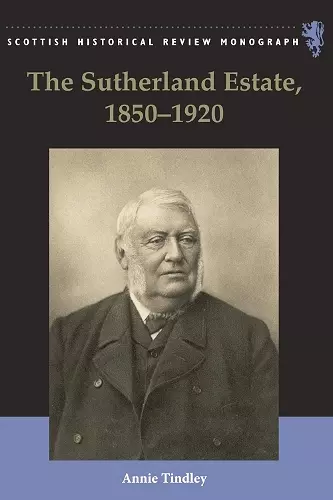The Sutherland Estate, 1850-1920
Aristocratic Decline, Estate Management and Land Reform
Format:Hardback
Publisher:Edinburgh University Press
Published:30th Jun '10
Currently unavailable, and unfortunately no date known when it will be back

From the mid-nineteenth century until the end of WWI, the Sutherland Estate was the largest landed estate in western Europe; at 1.1 million acres, the ducal family owned almost the entire county of Sutherland as well as a further 30,000 acres in England. The estate was owned by the dukes of Sutherland, who were among the richest patrician landowners of the period; from the early nineteenth century, however, the family were shadowed by their reputation as great clearance landlords, something that would come back to haunt them throughout the coming decades. This book: *studies the workings of the estate management and policy formation in the face of challenges from their crofting tenants, the land reform lobby and government agencies; *asks whether the ducal family experienced a 'decline and fall' as argued for the British aristocracy generally in the period; *examines a crucial period of Highland history from the neglected perspective of an estate, using estate papers, newspapers, crofter sources, and government records. The Sutherland estate was the largest and most infamous clearance estate in Britain and this book will appeal to history scholars and general readers interested in estate management and the decline of the aristocracy.
This is gripping and uncommonly readable Highland history, derived from insider sources, and by one of the new generation of historians of the north of Scotland. -- Professor Eric Richards, Flinders University, Adelaide, South Australia This is a contribution to the historiography of modern Highland Scotland of the very highest quality. -- TM Devine FRSE HonMRIA FBA, Sir William Fraser Professor of Scottish History and Palaeography, University of Edinburgh Until now, little has been written on Highland estate management in the post-1860 period. This book fills a gap in the historiography by presenting a nuanced and readable analysis of estate structures and the difficulties of creating a viable economy, let alone a profitable estate, in the far north during dramatic years of economic fluctuations, crofter agitation and unprecedented government intervention. Through this study, Tindley takes her place with historians such as James Hunter, Ewan Cameron and Eric Richards in debating the nature of the nineteenth-century Highlands. -- Elizabeth Ritchie, University of the Highlands and Islands Journal of Scottish Historical Studies As well-written as it is authoritative, it is both an important contribution to understanding of the Highlands and a persuasive proof (even to this longstanding sceptic) that there is much of value to be extracted from the documentation generated by estate managements. -- James Hunter, UHI Centre for History Scottish Historical Review Tindley's work is an excellent addition to Highland historiography, the clearances, and Highland estates generally. -- Lisa Cox, University of Guelph International Review of Scottish Studies This is gripping and uncommonly readable Highland history, derived from insider sources, and by one of the new generation of historians of the north of Scotland. This is a contribution to the historiography of modern Highland Scotland of the very highest quality. Until now, little has been written on Highland estate management in the post-1860 period. This book fills a gap in the historiography by presenting a nuanced and readable analysis of estate structures and the difficulties of creating a viable economy, let alone a profitable estate, in the far north during dramatic years of economic fluctuations, crofter agitation and unprecedented government intervention. Through this study, Tindley takes her place with historians such as James Hunter, Ewan Cameron and Eric Richards in debating the nature of the nineteenth-century Highlands. As well-written as it is authoritative, it is both an important contribution to understanding of the Highlands and a persuasive proof (even to this longstanding sceptic) that there is much of value to be extracted from the documentation generated by estate managements. Tindley's work is an excellent addition to Highland historiography, the clearances, and Highland estates generally.
ISBN: 9780748640324
Dimensions: unknown
Weight: 456g
200 pages